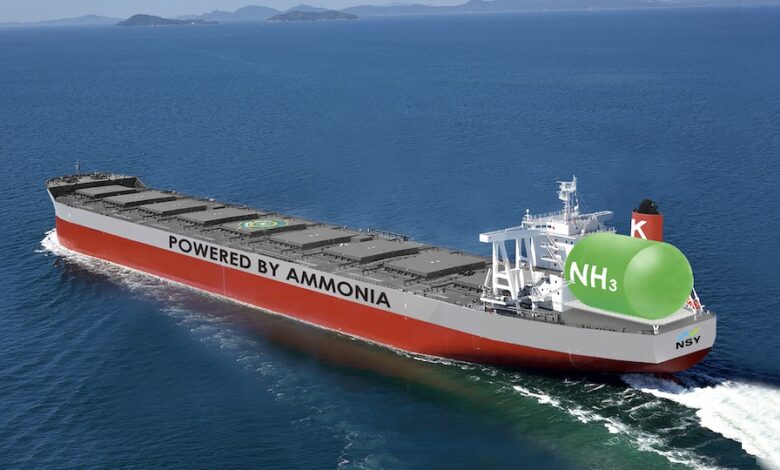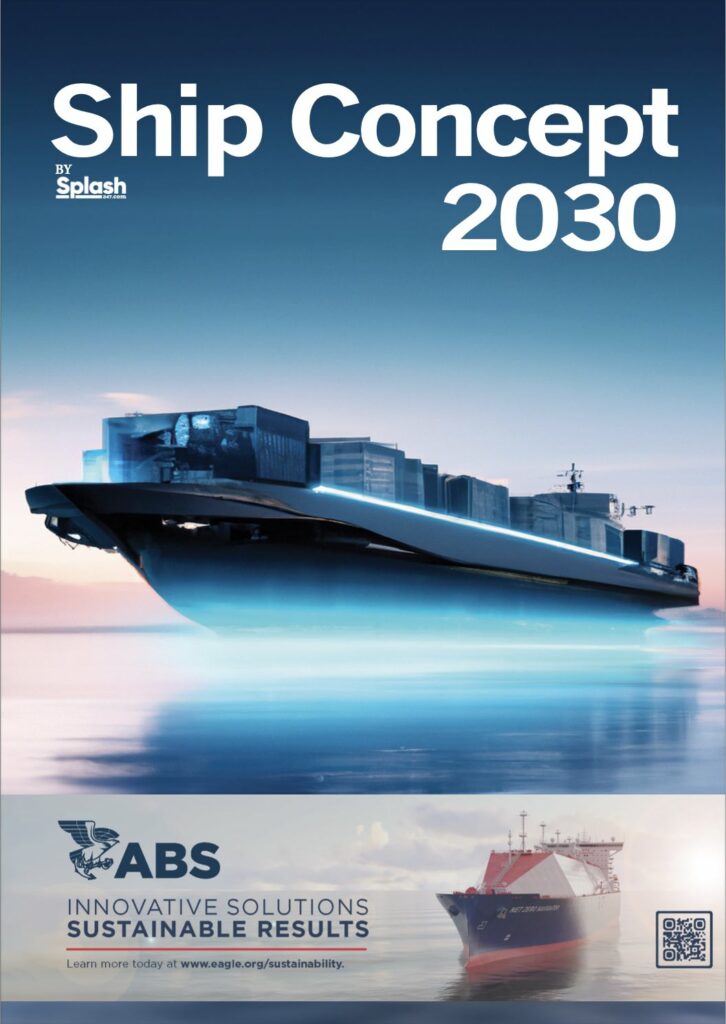Shipping’s $64bn fuel question

What will be the percentage breakdown of fuel types for all the ships that come out of yards in 2030?
It’s the crystal ball guesstimate that divides shipping more than any other topic these days. The winner of the future fuels debate. For the purposes of our new magazine, Ship Concept 2030, the breakdown of fuel types for all ships coming out of yards in 2030 will be the single defining characteristic of how vessels will look at the start of the next decade.
For the moment though it’s still all conjecture as the industry tests and trials all manner of bunker replacements.
Philippe Lecloux, chief operating officer at fuel specialist Aderco, says drop-in fuels will still dominate come 2030 with a much larger bio component.
“LinkedIn is already bunkering and burning ammonia on a daily basis,” quips Lecloux. “It will be more a reality in 2030 but less frequent than today on LinkedIn.”
Quite so, agrees Patrick Ryan, chief technology officer at ABS.
“Any predictions we make today about alternative fuels are destined to be incorrect,” Ryan observes, adding: “We are learning more everyday, but there are still many unknown factors that will drive the answer to this question. In the end, the regulatory landscape is coming into focus, but could still change again. With that as a backdrop, it will be economics that will drive the future fuel selection process.”
“Given the evolving nature of technologies and the regulatory environment, it’s challenging to provide a percentage breakdown – however we can be confident that LNG will continue to dominate the fuel mix, followed by methanol and ammonia,” says Kishore Rajvanshy, managing director of Fleet Management.
“What amazes me is how quickly the pendulum swings,” says Raal Harris, chief creative officer at Ocean Technologies Group, discussing the future fuels race.
“Ammonia seemed like the worst option six months ago and today is being heavily backed with some commitments to have ships on the water by 2026,” Harris explains, going on to predict a big percentage of 2030 newbuilds being hybrid and bio-fuels dominating.
“I also think we may see more LNG than people might like as pragmatism takes over,” Harris adds.
Green fuel scramble
The reality also is that by 2030 shipping will be fighting many other industries for every prized drop of the myriad new green fuels.
Increasing regulatory pressure to decarbonise, including stricter targets set by the International Maritime Organization (IMO) this July, means the shipping industry now needs to achieve a 20% reduction in emissions by 2030 and net-zero emissions by or around 2050. To meet the anticipated demand of 17m tonnes of oil equivalent annually by 2030, the maritime sector needs to access a 30-40% of the projected worldwide carbon-neutral fuel supply, according to a new report by DNV.
The percentage mix
According to S&P Global, LSFO consumption in 2030 is projected to be just over 40% while distillates used directly may reach 25% and HSFO with scrubbers is predicted to still make up 20% of the mix. The remaining 10-15% are expected to be split among between alternative fuels, according to S&P Global.
Emilio Lupi, general manager at SeaTec, a maritime technical services company, predicts that LNG will account for more than 30% of the market share for chemical/product tankers in the coming decade while only making up a small percentage for containerships.
“The total LNG share of the market is expected to reach about 10% for ships that come out of yards in 2030, while methanol on the other hand doesn’t seem to have the same increase in uptake, and isn’t likely to be a key player by 2030,” Lupi says, adding that heavy fuel oil will still count for more than 50% of the total market share by then.
Morten Langthjem, chief commercial officer at Glander International Bunkering, reckons that today there is consensus that LNG and biofuel are the main fuels in the transition phase towards 2030. Also, he says there will be an upscale in respect of methanol and more dual fuel engines are being put in newbuildings.
“There is generally a lack of availability of ammonia and hydrogen. Furthermore, technical, operational and safety advancements needs to be made,” the bunkering executive advises.
“Specifying precise percentages for each fuel type is challenging,” concedes Yeontae Kim, executive vice president of Korean Register’s technical division, “but it is evident that conventional fossil-fuelled vessels will decline rapidly due to the ongoing reinforcement of environmental regulations.”
Gas-powered ships such as LNG and LPG, which have well-established infrastructure including bunkering ships, will lead gas bunkering by 2030, Kim says with the next most common alternative fuel set to be methanol, which is easier to build bunkering facilities for than LNG and can be stored and transported at room temperature and atmospheric pressure. Ammonia and hydrogen fuelled ships will still be in their infancy by 2030, Kim suggests, while it’ll be a few years after that before nuclear propulsion makes an appearance.
Looking at the smorgasbord of alternative fuels facing him, Ralph Juhl, head of technical at Hafnia, the world’s largest product tanker owner, tells Splash: “LNG and LPG are the most commercially available right now, but we expect they will meet with some challenges further down the line as methanol or other lower emission supply chains build themselves up.”
Ammonia will have a significant impact further down the line, Juhl reckons, but Hafnia expects this to be the slowest to develop primarily due to technical and safety challenges.
This article is one of many in the recently published Ship Concept 2030 magazine, a publication designed to give readers a realistic idea of what newbuilds will look like in seven years’ time. Splash readers can read the full magazine for free by clicking here.

Ship Concept 2030 is sponsored by ABS, click here to read ABS’s 2023 Outlook.

All so-called fuel “solutions” that claim to reduce GHG emissions also demand a full life-cycle analysis of GHG emitted for meaningfull comparisons along with cost and availability. Comparisons of various fuel “solutions’ using only cost and availability criteria without full life-cycle analyses of GHG emissions misses the whole point of this issue – reduce the world’s GHG emmisions.
A very necessary point, well made.